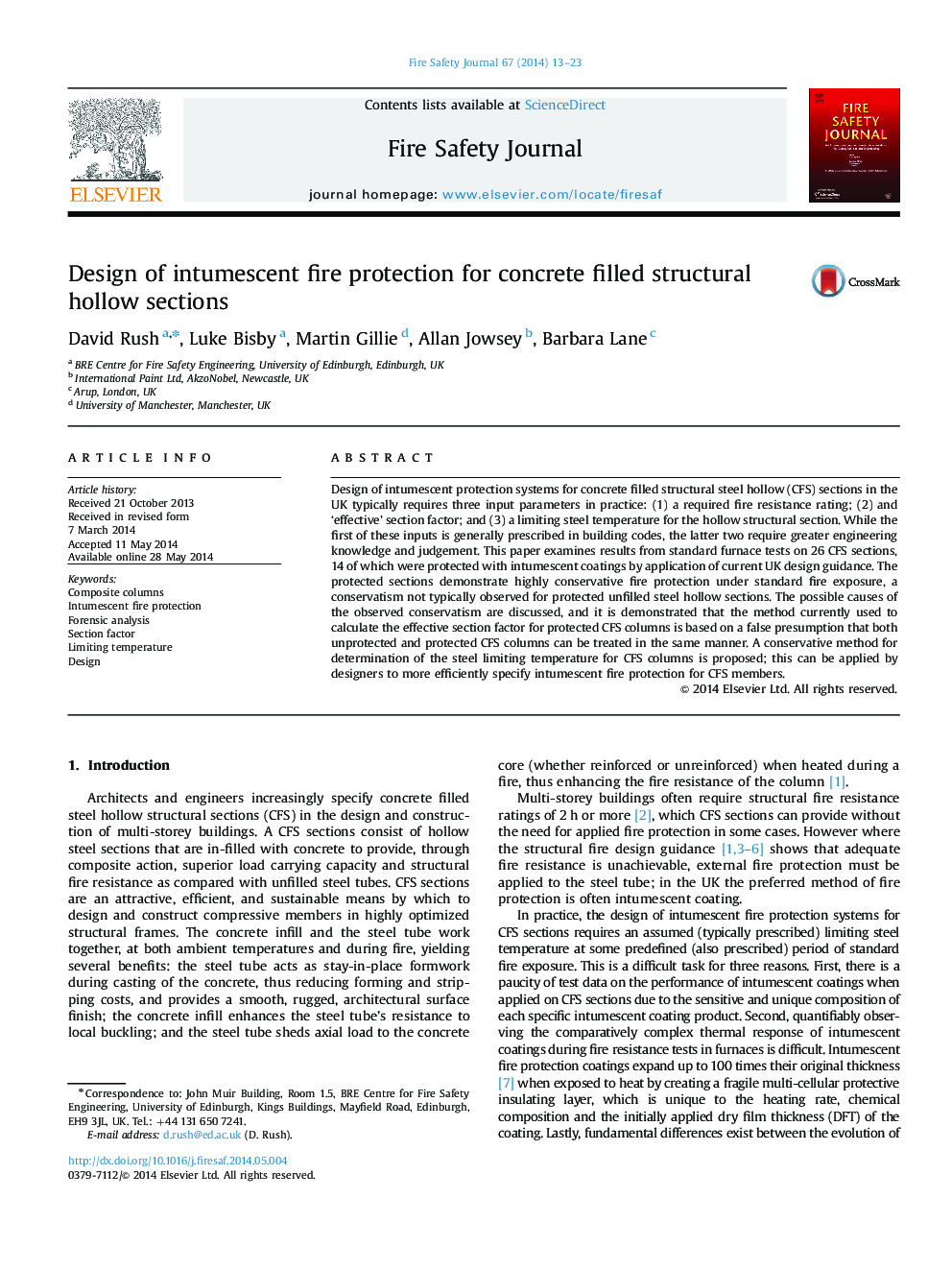| کد مقاله | کد نشریه | سال انتشار | مقاله انگلیسی | نسخه تمام متن |
|---|---|---|---|---|
| 269856 | 504709 | 2014 | 11 صفحه PDF | دانلود رایگان |
• Thermal tests on unprotected and protected concrete filled hollow (CFS) sections.
• Tests show current guidance for intumescent protection systems to be conservative.
• Forensic analysis of guidance shows that it is based on a false assumption.
• Design recommendations are given for intumescent protection systems on CFS sections.
Design of intumescent protection systems for concrete filled structural steel hollow (CFS) sections in the UK typically requires three input parameters in practice: (1) a required fire resistance rating; (2) and ‘effective’ section factor; and (3) a limiting steel temperature for the hollow structural section. While the first of these inputs is generally prescribed in building codes, the latter two require greater engineering knowledge and judgement. This paper examines results from standard furnace tests on 26 CFS sections, 14 of which were protected with intumescent coatings by application of current UK design guidance. The protected sections demonstrate highly conservative fire protection under standard fire exposure, a conservatism not typically observed for protected unfilled steel hollow sections. The possible causes of the observed conservatism are discussed, and it is demonstrated that the method currently used to calculate the effective section factor for protected CFS columns is based on a false presumption that both unprotected and protected CFS columns can be treated in the same manner. A conservative method for determination of the steel limiting temperature for CFS columns is proposed; this can be applied by designers to more efficiently specify intumescent fire protection for CFS members.
Journal: Fire Safety Journal - Volume 67, July 2014, Pages 13–23
